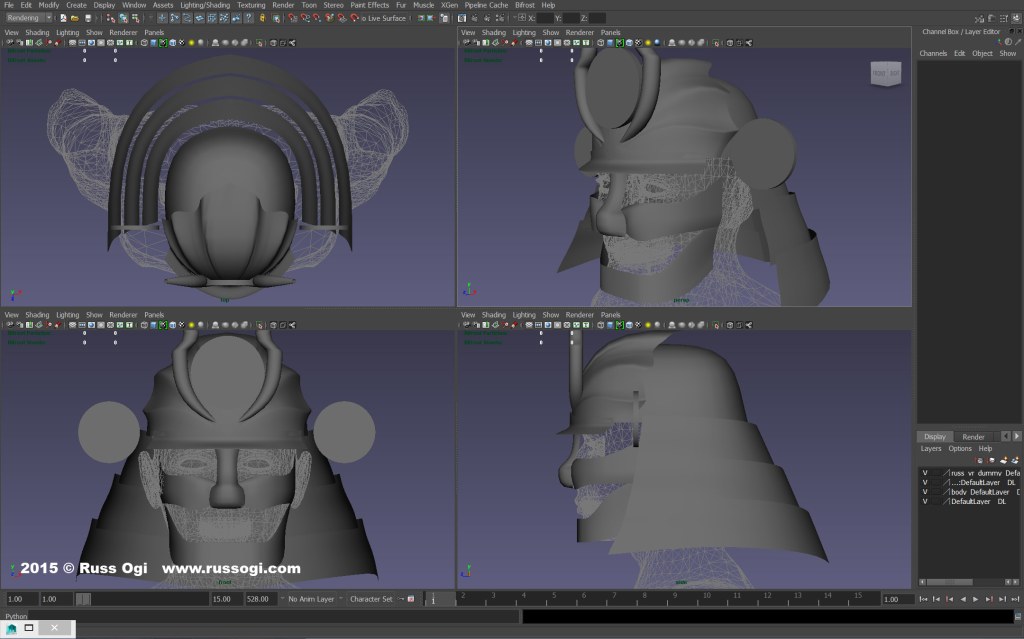Master The Art Of Software Modeling With Our Interactive Tutorial!
Software Modeling Tutorial: A Comprehensive Guide for Beginners
Greetings, Readers! Welcome to our in-depth software modeling tutorial. In this article, we will provide you with a step-by-step guide on how to effectively use software modeling tools for your projects. Whether you are a seasoned developer or just starting out, this tutorial will equip you with the necessary skills to create efficient and scalable software solutions.
Introduction
Software modeling is a crucial aspect of the software development process. It involves creating visual representations of software systems, enabling developers to better understand the structure, behavior, and relationships within the system. By using software modeling tools, developers can design, analyze, and communicate their ideas effectively.
1 Picture Gallery: Master The Art Of Software Modeling With Our Interactive Tutorial!

In this tutorial, we will cover the basics of software modeling, including its purpose, benefits, and best practices. We will also explore various types of software modeling techniques and provide real-life examples to illustrate their usage.
What is Software Modeling?
🔍 Software modeling is the process of creating abstract representations of a software system using specialized tools and techniques. These models help developers visualize the system’s structure, behavior, and interactions.
Software models can take various forms, such as diagrams, flowcharts, and prototypes. They serve as blueprints for the actual software development process, guiding developers throughout the entire lifecycle of the project.
The Importance of Software Modeling

Image Source: materialise.com
Software modeling plays a crucial role in the software development lifecycle. Here are some key reasons why it is important:
🔍 Improved Understanding: Models provide a visual representation of the software system, making it easier for developers to understand its complexities and dependencies.
🔍 Enhanced Communication: Models serve as a common language between developers, designers, and stakeholders, facilitating effective communication and collaboration.
🔍 Early Error Detection: By creating models, developers can identify potential errors and design flaws before the actual coding phase, saving time and effort in the long run.
🔍 Scalability and Adaptability: Models allow developers to easily modify and update the software system, ensuring its scalability and adaptability to changing requirements.
Types of Software Modeling Techniques
🔍 There are several software modeling techniques available, each serving a specific purpose in the software development process. Let’s explore some commonly used techniques:
1. UML (Unified Modeling Language)
The Unified Modeling Language is a standardized modeling language used in software engineering. UML provides a set of notations and diagrams for representing various aspects of a software system, such as structure, behavior, and interactions.
2. BPMN (Business Process Model and Notation)
BPMN is a graphical representation of business processes. It allows developers to model, analyze, and optimize business workflows, ensuring efficient and effective operations.
3. ER Diagrams (Entity-Relationship Diagrams)
ER diagrams are used to represent the relationships between entities in a database. They help developers design and understand the structure of a database system.
4. Use Case Diagrams
Use case diagrams depict the interactions between system actors and the software system. They are used to identify and define the functional requirements of a system.
5. State Machine Diagrams
State machine diagrams represent the behavior of a system, showing how it responds to various events and transitions between different states.
6. Sequence Diagrams
Sequence diagrams capture the interactions between objects in a software system, illustrating the order of messages exchanged between them.
Who Can Benefit from Software Modeling?
🔍 Software modeling is beneficial for a wide range of professionals involved in the software development process. Here are some key roles that can benefit from software modeling:
1. Software Developers
Software developers can use software modeling techniques to better understand the requirements of a project, design efficient solutions, and communicate their ideas to other team members.
2. System Analysts
System analysts can use software models to analyze and document complex business processes, ensuring a clear understanding of the system’s requirements and functionalities.
3. Project Managers
Project managers can benefit from software modeling by visualizing and managing project timelines, resources, and dependencies. Models help in tracking progress and making informed decisions.
4. Quality Assurance (QA) Engineers
QA engineers can utilize software models to develop test scenarios and validate the functionality and behavior of the software system, ensuring its quality and reliability.
When and Where to Use Software Modeling?
🔍 Software modeling can be used at various stages of the software development process, from initial design to system maintenance. It can be applied in different domains and industries, including:
1. Software Development
Software modeling is commonly used during the design and development phases of a software project. It helps in understanding the system requirements, designing the architecture, and communicating the design to stakeholders.
2. Systems Engineering
Systems engineers use software modeling techniques to design and analyze complex systems, ensuring the integration and interoperability of different components.
3. Business Process Management
In the field of business process management, software modeling is used to visualize and optimize business workflows, identifying bottlenecks and improving overall efficiency.
4. Database Design
Database designers utilize software modeling techniques to create entity-relationship diagrams, ensuring the proper structure and organization of the database system.
Why Use Software Modeling?
🔍 There are several compelling reasons why you should consider incorporating software modeling into your development process:
1. Improved Collaboration
Software modeling facilitates effective collaboration between team members, enabling them to work together towards a shared goal. Models serve as a common language, ensuring everyone is on the same page.
2. Reduced Development Time
By creating software models, developers can identify design flaws and potential issues early on, saving time and effort in the coding phase. This leads to a more efficient and streamlined development process.
3. Enhanced Software Quality
Software modeling allows developers to visualize the system’s structure and behavior, enabling them to design more robust and reliable solutions. This leads to improved software quality and customer satisfaction.
4. Effective Communication
Models provide a visual representation of the software system, making it easier to communicate complex ideas and concepts to stakeholders. This ensures that everyone involved has a clear understanding of the project.
How to Start Software Modeling?
🔍 If you are new to software modeling, here are some steps to help you get started:
1. Define the Project Scope
Before you start modeling, clearly define the scope and objectives of your project. Understand the requirements and constraints to ensure that your models align with the project’s goals.
2. Select the Right Modeling Technique
Choose the appropriate modeling technique based on the nature of your project and the specific requirements. Consider factors such as system complexity, stakeholders’ preferences, and industry standards.
3. Gather Requirements and Create a Conceptual Model
Identify the key requirements of your software system and create a conceptual model that represents the high-level structure and behavior. This will serve as the foundation for further modeling activities.
4. Refine and Extend the Model
Gradually refine and extend your model by adding more details and incorporating additional elements. This iterative process allows you to continuously improve the accuracy and completeness of your models.
5. Validate and Verify the Model
Regularly validate your models against the project requirements, ensuring that they accurately represent the desired system functionalities. This helps in identifying any discrepancies or inconsistencies.
6. Communicate and Collaborate
Share your models with stakeholders, developers, and other team members. Solicit feedback and actively collaborate to refine and enhance the models. Effective communication is key to successful software modeling.
7. Update and Maintain the Models
As the project progresses and new requirements emerge, update and maintain your models accordingly. This ensures that the models remain up-to-date and reflect the current state of the software system.
Advantages and Disadvantages of Software Modeling
🔍 Like any other approach or technique, software modeling has its own advantages and disadvantages. Let’s explore them:
Advantages:
🔍 Improved Understanding: Software models provide a clear visual representation of the system, making it easier to understand and analyze its complexities.
🔍 Effective Communication: Models serve as a common language between developers and stakeholders, ensuring effective communication and collaboration.
🔍 Early Error Detection: By creating models, potential design flaws and errors can be identified early in the development process, saving time and effort.
🔍 Scalability and Adaptability: Models allow for easy modification and adaptation of the software system, ensuring its scalability and responsiveness to changing requirements.
🔍 Documentation and Maintenance: Software models serve as valuable documentation for future maintenance and updates, providing insights into the system’s design and functionality.
Disadvantages:
🔍 Time and Effort: Creating detailed software models can be time-consuming and require significant effort, especially for complex systems.
🔍 Learning Curve: Mastering software modeling techniques and tools may require a learning curve, especially for beginners.
🔍 Model-Reality Gap: Models may not always accurately represent the real-world system, leading to potential gaps between the model and the actual implementation.
🔍 Maintenance Overhead: As the software system evolves, the models need to be updated and maintained, which can impose additional overhead on the development process.
Frequently Asked Questions (FAQ)
1. What is the best software modeling tool?
🔍 The best software modeling tool depends on your specific requirements and preferences. Some popular options include:
Enterprise Architect
Lucidchart
Visual Paradigm
IBM Rational Rose
Sparx Systems Enterprise Architect
2. Can software modeling be skipped in the development process?
🔍 While software modeling is not mandatory, it is highly recommended for complex projects. Skipping software modeling can lead to increased development time, poor communication, and potential errors in the final product.
3. Are software modeling and prototyping the same?
🔍 No, software modeling and prototyping are different concepts. Software modeling focuses on creating visual representations of the system, while prototyping involves creating working prototypes to validate design decisions.
4. Can software models be automatically generated from code?
🔍 Yes, there are tools available that can generate software models from existing code. These tools analyze the codebase and create corresponding models, facilitating reverse engineering and documentation.
5. Is software modeling limited to specific programming languages?
🔍 No, software modeling is language-agnostic. It can be applied to any programming language or technology stack, as it focuses on the system’s structure and behavior rather than the specific implementation details.
Conclusion
In conclusion, software modeling plays a crucial role in the development of efficient and scalable software systems. By creating visual representations of the system, developers can better understand its complexities, communicate their ideas effectively, and identify potential errors early on. Software modeling techniques, such as UML, BPMN, and ER diagrams, provide powerful tools for designing, analyzing, and documenting software systems.
We hope that this tutorial has provided you with valuable insights into software modeling and its benefits. As you embark on your software development journey, remember to leverage the power of modeling to create robust and reliable solutions.
If you have any further questions or need assistance, feel free to reach out to our team. Happy modeling!
Final Remarks
🔍 Disclaimer: The information provided in this article is for educational purposes only. The use of software modeling tools and techniques may vary depending on the specific project requirements and industry standards. Always consult with experienced professionals and refer to official documentation for accurate and up-to-date information.
This post topic: Software Tutorials
